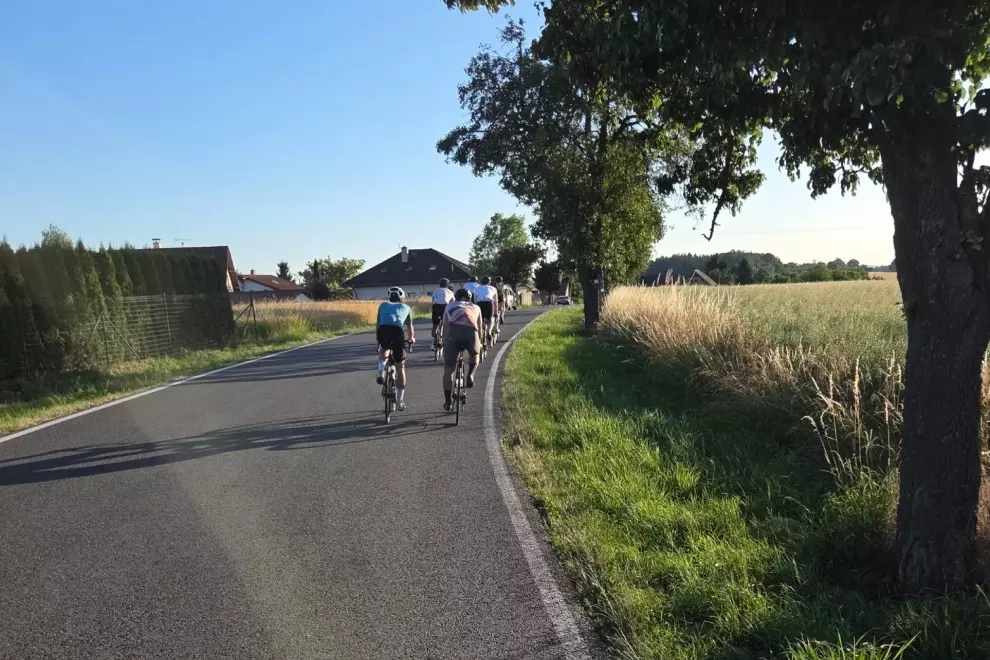Citing your website, you’re fascinated by bats, Leoš Janáček and beer. How about cycling?
I do cycling. For me, it is a wonderful activity and, on top of it, much faster than walking. But I do not cycle for the cycling itself. A healthy society should offer its citizen the opportunity to live in places with more bikes than cars, where cycling is not dangerous. A bicycle is simply an elegant vehicle. I am frequently cycling from my home to my studio or just wandering through the countryside. Every summer, I take a ride with my friends where we’re following borders of Czechia on our classic old bikes without gears (Dutch would call it “opa fiets”). With another friend and on similar bikes, I rode back home to the Czech Republic from my studies in Rotterdam through Belgium and Germany. But I am not that crazy about the bikes as I seem to be.
So do you still have a bike?
Yes, I do. As I said, it generally serves me to move from one point to another.
When it comes to bicycle design, what kind of bikes do you like?
I really like old city bikes that you can find in second-hand shops: heavy, black, and noisy. The additional benefit is you can leave them locked to any lamp in a dirty suburb without thieves’ noticing. I am just describing the opposite of Festka but I admire their approach to technology and design. However, my style is rather old fashioned.
What was the main difference between drawing on paper and a bicycle frame?
The main difference was fundamental – a sheet of paper is a solid and large flat surface. The largest flat spot on the frame had about two square centimetres. The most challenging part for me was the gilding while using tiny golden leaves.

What kind of technique did you use to prevent the drawings from getting damaged or blurred?
I had to be very patient and work in special gloves. Accidentally blurred lines had to be immediately cleaned with alcohol to prevent smudges on the frame.
How would you describe your style?
For the Festka bike, I used quite a narrative style of drawing, a little bit funny, inspired by the oriental way of filling up space by a certain pattern. It is something between a caricature and porcelain ornament.
How did you team up with the guys from Festka?
I knew Festka before but I’m not quite sure how they found me. Their art director Tom Hnida asked me if I was interested in collaboration, which I regarded as a very special offer. I was kind of recommended by one of our mutual friends.

Where did you get the inspiration for the Festka Porcelain project?
I love porcelain and its fusion with oriental aesthetics. The motives to be drawn on the frame were carefully selected according to the client’s liking. The bike was meant as a surprise for him so we had to keep it a secret. Some of the themes were chosen after studying the client’s Instagram and the rest were my associations driven by automatic drawing. The good thing was that the client is as big fan of the porcelain as I am. Actually, it was probably the reason why I was picked for this assignment. Following that decision, we arranged several Skype calls with the client’s best friend whom I later met in my studio in Prague. A major part of the design was created in cooperation with the project’s art director Tom Hnida. The complete design shows all the milestones in the client’s life such as the names of his children, his hobbies like travelling, playing the flute and, obviously, cycling.
What was the client’s first impression?
The finished bike was delivered by plane directly to Bangkok so I couldn’t see in person how the client responded following the handover. Soon afterwards, however, I got a personal message from him saying that despite being an owner of many custom bikes, he regards this particular one the only genuine custom bicycle he’s ever got. You can imagine how pleased I was. I hope he had that same kind of smile I had when I saw the first bloom of blue Delphiniums I planted in my garden two years ago (laughs).

Michal Bačák studied product design at the School of Fine Arts in Zlín, the Czech Republic. During his studies in the Netherlands, he combined graphic design education with practical designs. In the course of his career, Bačák received a number of assignments from prominent brands and businesses, the most recent one being from Hermés. He was awarded The Illustrator of the Year at 2016 Czech Grand Design. More of Michal’s artwork can be found at www.michalbacak.com






